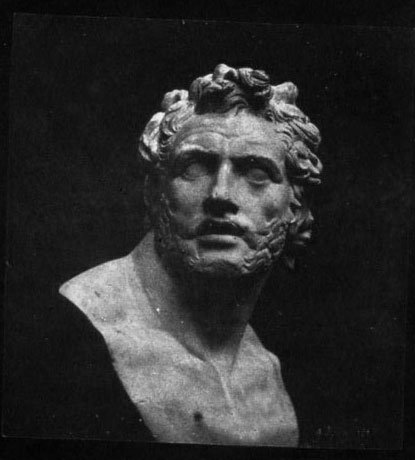|
© Copyright 2003 by the
Photography Criticism CyberArchive. All rights reserved. photocriticism.com |
 |
This printout is for reference only.
Reproduction and distribution of multiple copies prohibited. |
Archive texts:
History of Photography
The Pencil of Nature (1844-46)
Part I (cont.): PLATE V. BUST OF PATROCLUS.
STATUES, busts, and other specimens of sculpture, are generally well represented by the Photographic Art; and also very rapidly, in consequence of their whiteness.
These delineations are susceptible of an almost unlimited variety: since in the first place, a statue may be placed in any position with regard to the sun, either directly opposite to it, or at any angle: the directness or obliquity of the illumination causing of course an immense difference in the effect. And when a choice has been made of the direction in which the sun’s rays shall fall, the statue may be then turned around on its pedestal, which produces a second set of variations no less considerable than the first. And when to this is added the change of size which is produced in the image by bringing the Camera Obscura nearer to the statue or removing it further off, it becomes very evident how very great a number of different effects may be obtained from a single specimen of sculpture.
With regard to many statues, however, a better effect is obtained in delineating them in cloudy weather than in sunshine. For, the sunshine causes such strong shadows as sometimes to confuse the subject. To prevent this, it is a good plan to hold a white cloth on one side of the statue at a little distance to reflect back the sun’s rays and cause a faint illumination of the parts which would otherwise be lost in shadow.

For citation purposes, the specific online source for this text is: